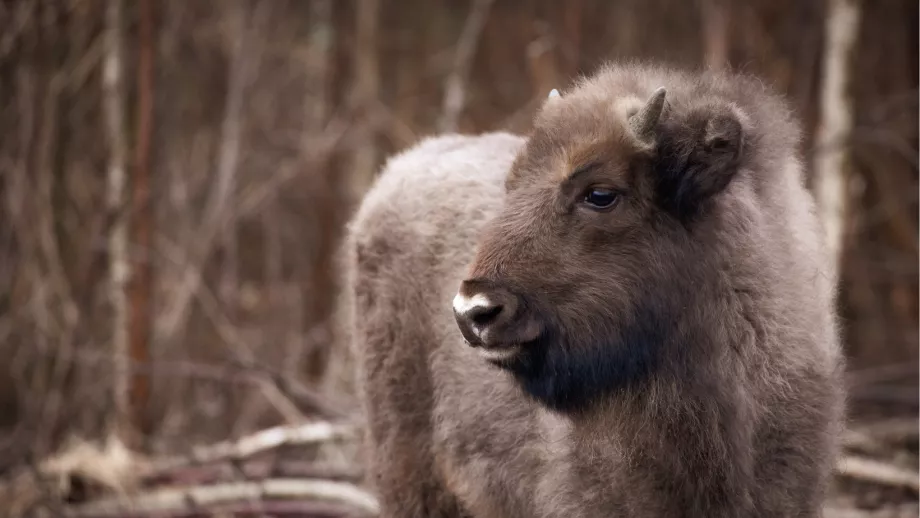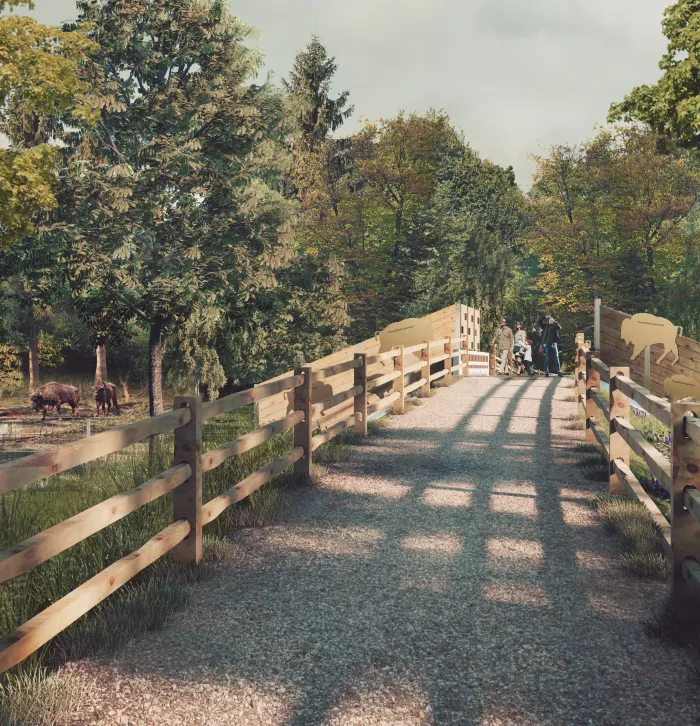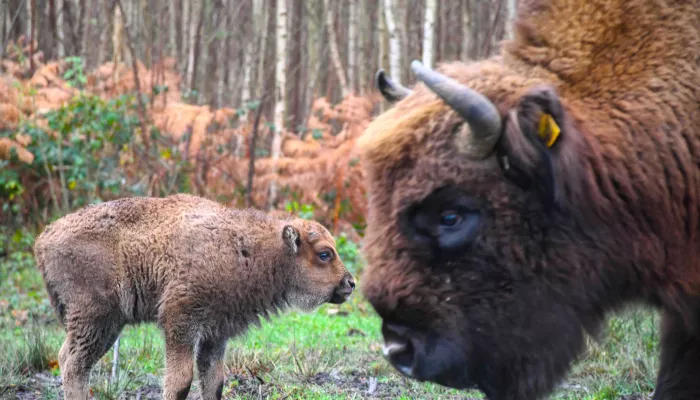The youngster now sports an impressive set of horns and developed the iconic bison shape of her herd. Her muscles have grown, she is sure on her feet and uses her strong teeth to de-bark trees. She has grown from a shy small calf and transformed into an ecosystem engineer – shaping the landscape around her and creating space and light for wildlife to thrive.
Her mother arrived in Kent from Ireland with another young female last July and, alongside the matriarch from Scotland, who is 19 years old, they made their first tentative steps into the woodland under the gaze of the world’s media, keen to capture the historic moment. As they watched on, little did any of the 50 or so spectators know that the young female from Ireland was carrying a secret and, in just a few months, she would give birth to the calf.

Credit: Donovan Wright
Head Bison Ranger, Tom Gibbs, was the first to discover the news, recalls: “All of the herd were together apart from female two, so I decided to track her into the woodland. After a while, I found her in a quiet corner of the forest, and she looked calm and relaxed. I walked round a little further and I saw a little head pop out from behind female two. They were both perfectly happy and like they had lived in that environment their whole lives; it was an incredibly special moment.
“Though it was a surprise we had an inkling she may have been pregnant. She seemed quite dominant over the other younger female and certainly had the best appetite of the herd but, not only was it outside the breeding season, bison also conceal their pregnancies to deter predators, so it is quite difficult to know for sure if a bison is ‘in-calf’. We have a hands-off approach with the herd, to allow them to be as wild as possible so testing or scanning them is out of the question, it would cause them too much distress and goes against the principles of the project.”
Since the calf’s arrival, the Blean Bison Project has continued to develop. In December, the final founding member of the herd, a bull from Germany who had been delayed due to paperwork complexities, finally joined the four females. Earlier this year, in March, the final members of the grazing assemblage, Exmoor ponies, Iron-Age pigs and Longhorn cattle, were also released into West Blean and Thornden Woods.
The project is split into three treatment areas, one containing bison, another cattle, and a third that will continue to be managed traditionally. An extensive monitoring programme is in operation to collate data on how each method impacts the woodland habitats and its wildlife .
The final phase of the project involves building bison crossing points to give the herd freedom of movement across 200 hectares. Fundraising is in place to raise the money for the installation with works planned for later this year.
Moving forward, the Wilder Blean initiative, which was recently awarded £100,000 from the new Rewilding Challenge Fund from Rewilding Britain, aims to develop an ambitious vision for a Wilder Blean Natural Park. The Initiative, a partnership between Kent Wildlife Trust, the Woodland Trust and the RSPB, embarked on a journey that will see the future of the Blean secured and become a place not only visited for its outstanding wildlife and scenic woodlands but also recognised for its positive social and economic opportunities for the community.
Wilder Blean Landscapes Development Manager Helen Pitman said: “This is a ground-breaking Initiative that will work with stakeholders, farmers and land-owners to develop a concept for a landscape, where wilderness can be experienced, and nature is at the heart of healthy communities with a thriving green economy. We are bringing together knowledge, expertise and ideas, to build a vision of a restored, climate-resilient Blean landscape, driven by natural processes, with missing species returned; one that is reconnected and wilded in one of the most land-scarce corners of England.”
The Blean Bison Project forms part of the Wilder Blean Initiative, working with our partners to connect the landscape for nature.

Sponsor a bison bridge
The next phase of this involves the installation of bison bridges, to allow these ecosystem engineers full access to the woodland.

